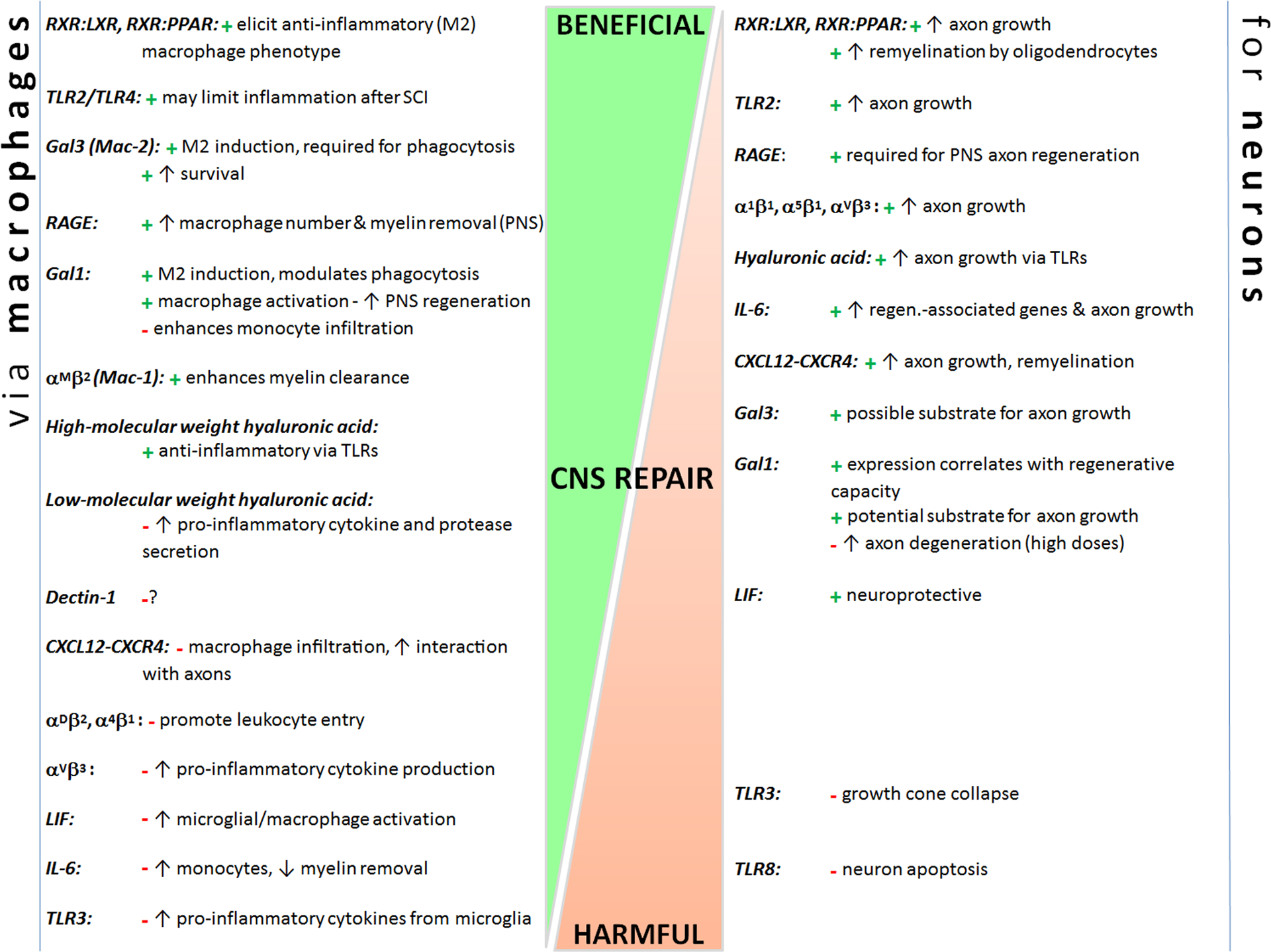Fig. 2.

CNS repair-related processes can be initiated or prevented via similar pathways/receptors in both macrophages and neurons. These factors can alter neuron extrinsic (e.g., macrophages) and intrinsic responses to improve or hamper repair. Some factors have reparative effects on both macrophage phenotype and neuron growth/survival (e.g., TLR2, RXR heterodimers, Gal3), whereas others have contradictory effects on the two cell types (e.g., αVβ3 integrin, IL-6, CXCL12-CXCR4). Factors discussed are placed on a continuum of CNS repair, from beneficial (top) to harmful (bottom) (placements are estimates based on known effects). “+” represents a beneficial effect; “-” represents a harmful effect. See text for references.
